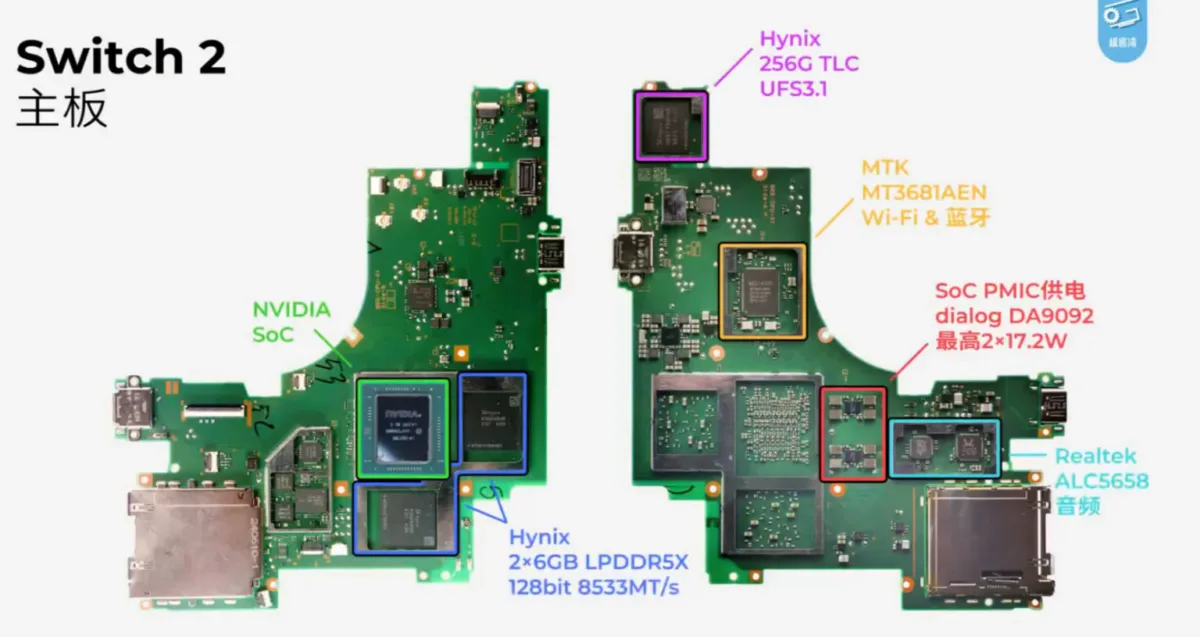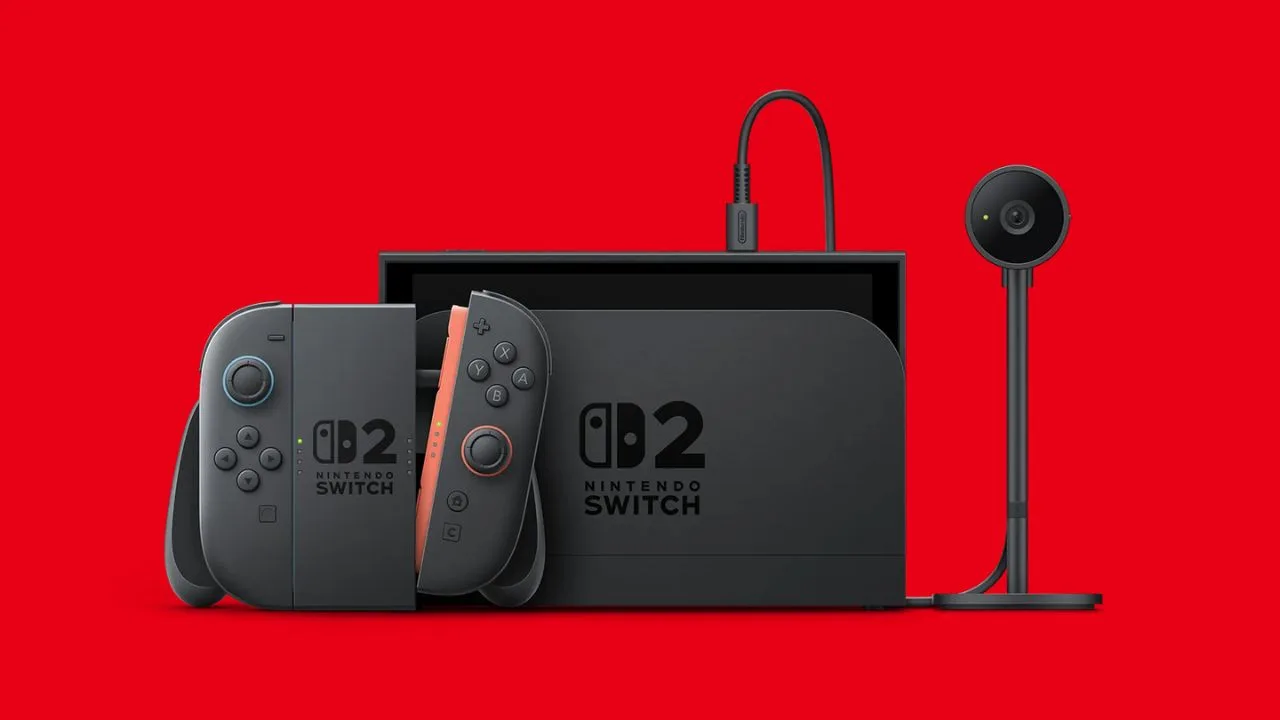Nintendo has confirmed the technical details of the Switch 2, scheduled for release on June 5, 2025. The new console debuts with a custom processor developed in partnership with NVIDIA, the T239, as well as advances in memory, storage and graphics processing.
- Procon-SP notifies Nintendo for abusive clauses in contract
- Genshin Impact Introduces Skirk and Dahlia for Version 5.7
The chip's architecture includes eight Arm Cortex-A78C cores with exclusive support for 64-bit instructions. Two cores are dedicated to the operating system, while the other six are available for gaming. The operating frequency varies depending on use, reaching up to 1,700 MHz in specific situations.

Ampere GPU guarantees graphical leap
The Nintendo Switch 2's graphics unit uses the Ampere architecture, with 1,536 CUDA cores. This change represents a significant improvement over the previous generation, which had only 256 cores. The new GPU operates at 561 MHz in handheld mode and 1,007 MHz in docked mode.
With this configuration, graphics performance reaches 3.07 teraflops when docked, compared to the original Switch's 0.39 teraflops. The console also supports technologies like DLSS and ray tracing, although no games have been announced yet that utilize these features. Future releases, such as Star Wars Outlaws, are expected to utilize them.
Additionally, ray tracing offers up to 10 gigarays per second in handheld mode and 20 gigarays per second when docked. Even with part of the GPU reserved for system tasks, the gain in available power for gaming is significant.

LPDDR5X memory increases performance
The Nintendo Switch 2 comes with 12 GB of LPDDR5X memory, split across two 6 GB modules. Bandwidth reaches 102 GB/s when docked and 68 GB/s in handheld mode. This new configuration represents nearly triple the previous capacity.
Of these 12 GB, 9 GB are free for games and applications, while the other 3 GB are reserved for the system. In the first model, only 3.2 GB was available for games, which limited the running of more demanding titles.
The new memory directly contributes to the loading speed and stability of games, especially those with open worlds and high-resolution textures.
Storage triples and gains decompression engine
The new console features 256 GB of internal UFS storage, compared to the previous version's 32 GB eMMC. Expansion is still possible via MicroSD card, now supporting the Express standard, which allows for up to 2 TB of additional storage.
The Switch 2 also debuts a first-of-its-kind feature: a dedicated file decompression engine. Called the File Decompression Engine (FDE), the system works with the LZ4 format, freeing up the main processor for other tasks.
This mechanism helps reduce charging time without overloading the main chip, which also contributes to the device's thermal control.

Screen grows and gains HDR and variable rate
The Switch 2's display is 7.9 inches, with 1080p resolution, HDR10 support, and a variable refresh rate (VRR) of up to 120Hz. The ten-point multitouch panel maintains the interactivity of previous models, but with improved image quality.
VRR only works on the built-in display and isn't available via HDMI. This is due to limitations of the dock's DisplayPort-to-HDMI converter, which has been suggested in previous reviews.
Despite this restriction, the new screen represents a significant advance, especially for those who play in portable mode, with smoother and more detailed images.
What the specs reveal about the new Switch phase
The Nintendo Switch 2 represents a significant technical advancement, focusing on balanced performance and intelligent optimization. The adoption of the Ampere GPU, DLSS, and increased RAM demonstrates Nintendo's commitment to maintaining its portable approach, but without limiting developers as before. The console now has the power to run modern titles more smoothly and with less graphical degradation, especially with DLSS support.
Furthermore, the decompression engine and faster RAM indicate a focus on energy efficiency and user experience, prioritizing fast loading times and reduced heat. The lack of VRR via HDMI reinforces that the priority is still portable mode, not direct competition with the PS5 or Xbox.
In short, the Switch 2 is a more mature console, prepared for the new generation of games, balancing power, portability, and technical intelligence well, without losing the essence of the hybrid proposal that made it a global phenomenon.


